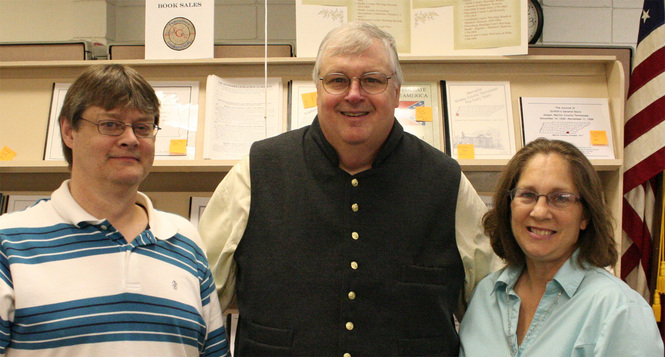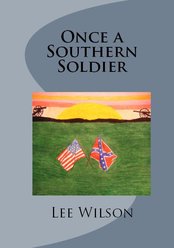 Dr. Lee E. Wilson, DDS / Author
Dr. Lee E. Wilson, DDS / Author Carla Love Maitland
As a native Memphian and a former history teacher, I’ve learned so much about the city of my birth over the years and at one time even developed and taught special interest courses about Memphis to middle school students. Nevertheless, I constantly learn new and amazing things about the city’s history. Since the beginning of the commemoration of the Sesquicentennial of the Civil War in 2011, I’ve acquired even more knowledge about Memphis and the surrounding area. The involvement and significance of this area during the Civil War is so much more than most people realize.
I do know that my understanding increased tremendously after the presentation given to the Tennessee Genealogical Society by Dr. Lee Eugene Wilson on Saturday, June 22, 2013. Dr. Wilson, a dentist by profession, is a Civil War enthusiast and author of two published books* relating an ancestor’s story of love, war, and survival in the turbulent years in the Western Theatre of Operations in the Civil War. The stories are based on facts and documents passed along through his family. He has a third book in the series due to come out in July. The name of his presentation was "Genealogy and the Civil War - or Was my Great Grand Pappy Really in the Civil War and How do I Find Out?"
Lee, as he asked us to call him, explained that he caught the “history bug” due to those many family stories told over the years. He is a native Mississippian, born in the small town of Duck Hill, who has lived in the Memphis area for around thirty years. The knowledge he’s gained of the history of this region is extraordinary. Lee described the numerous Union encampments that were established after the fall of Memphis to Union forces on June 6, 1862. He described the importance of these areas as well as the Confederate bases and forays into those Union forts, resulting in frequent battles in this area. He used a series of modern-day photos to help the audience put into perspective exactly where those camps, forts and engagements took place, as well as other places of historical significance.
 Dr. Jay Bobo; Shelby County Historical Commission / Dr. Lee E. Wilson; author* / Tina Sansone; Vice President, TN Genealogical Society
Dr. Jay Bobo; Shelby County Historical Commission / Dr. Lee E. Wilson; author* / Tina Sansone; Vice President, TN Genealogical Society As Lee said, most people who live in this area don’t realize how much activity actually happened during the 1860s around Memphis, Germantown and Collierville. In truth, most of us in attendance didn’t. He also brought with him a sampling of some of the sabers, swords, bayonets and rifles used during the Civil War. Even more interesting was his own family’s Bible and other memorabilia that were on display for people to look at and examine.
Lee’s presentation began with a chart showing what an incredible toll the Civil War took as far as the loss of population in the United States. Although around 650,000 casualties are the current numbers generally given, historians are increasing those numbers based on census records that continue to show the actual ‘missing generations’ of men after the 1860 census.
Another part of Lee’s presentation had to do with the many websites, books, and other resources that he used to research his own family and that are available for anyone to use in order to find out if their own ancestor or ancestors participated in the Northern or Southern forces during that time period. He went into detail regarding a few of them, describing how to use them for the best research results.

*Once a Southern Soldier: A Novel of the Civil War; Copyright @2011 by Dr. Lee E. Wilson.
Always a Southern Soldier (The second book in the series Once a Southern Soldier); Copyright @2012 by Dr. Lee E. Wilson.
Forever a Southern Soldier (The third book in the series Once a Southern Soldier); July 2013 release by Dr. Lee E. Wilson.
Photos by Jim Bobo


